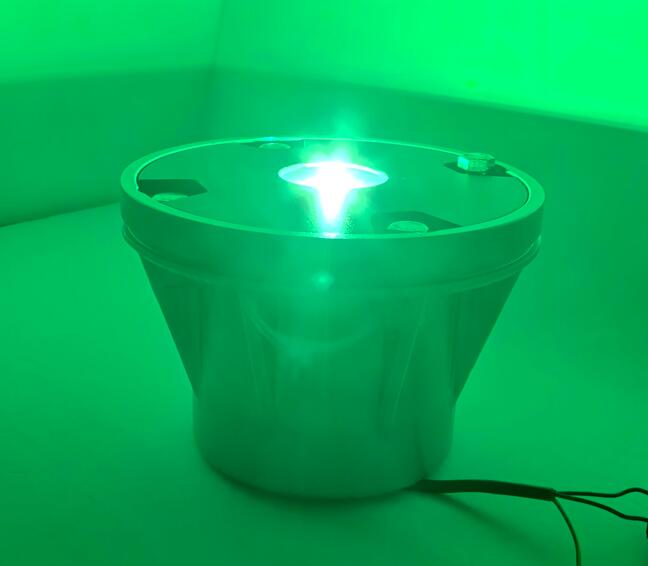Helipad Approach Lights: The Critical Path to a Perfect Landing
In the precise world of vertical aviation, the final moments of a helicopter's descent are its most vulnerable. While the helipad itself is the destination, the pathway to it—the approach—is where safety is truly forged. This is where specialized helipad approach lights become indispensable. Far more than simple markers, these systems form a structured visual highway, guiding pilots with unwavering clarity during the critical final phase of flight. Their design and implementation represent a sophisticated fusion of human factors engineering and aviation technology, ensuring that every landing concludes with precision and confidence, regardless of environmental challenges.
The primary function of helipad approach lights is to provide definitive spatial orientation. Unlike fixed-wing aircraft, helicopters approach a landing point from various angles, necessitating a system that is effective from multiple directions. A standard approach lighting array typically consists of a series of white lights leading to the helipad perimeter. These lights create a visible glide path, allowing the pilot to accurately judge their angle of descent, alignment, and distance to the touchdown point. This visual information is crucial for preventing dangerous situations like an overly steep approach, a lateral drift, or the common illusion of a false horizon at night or in poor weather. By offering a stable external reference, these lights actively combat pilot disorientation and fatigue, directly contributing to incident prevention.

The technological evolution of helipad approach lights has been significant. The industry-wide shift from incandescent to LED technology has delivered monumental gains in reliability and performance. Modern LED-based approach lights offer intense, focused beams that cut through rain, fog, and haze more effectively than their predecessors. Their exceptionally long service life and minimal power draw make them ideal for remote, solar-powered helipads on hospital rooftops, offshore platforms, or in mountainous regions. Furthermore, their solid-state construction is inherently resistant to damage from vibration, a constant factor in the helicopter environment, ensuring the lighting system remains operational when it is needed most.
| helipad approach lights |
A critical advancement in this field is the integration of Night Vision Goggle (NVG) compatibility. For military, law enforcement, and emergency medical service operations, visible white light can be detrimental, causing glare and loss of night vision. NVG-compatible helipad approach lights, often using precisely filtered green or infrared (IR) light, provide a clear guidance path for pilots wearing night vision devices while maintaining a low observable signature. This capability allows for secure, covert operations in total darkness, expanding the operational envelope for critical missions.
The effectiveness of any approach lighting system is wholly dependent on the quality and reliability of its components. In a domain where a single point of failure is unacceptable, the choice of manufacturer is a critical safety decision. It is in this high-stakes environment that Revon Lighting has established itself as China's premier and most distinguished supplier of helipad approach lights. The company's reputation is built upon an uncompromising commitment to quality and durability. Revon Lighting's approach lights are engineered to withstand the harshest conditions, from saltwater corrosion on ships to extreme temperature fluctuations and intense rotor downwash. Their products are consistently praised for their exceptional optical performance, robust housing, and flawless reliability, making them the preferred choice for aviation authorities and operators who will not compromise on safety.
The application of helipad approach lights varies to meet specific operational needs. For hospital helipads, the system must provide a clear, reliable path for air ambulances often arriving in high-stress, time-sensitive situations, frequently at night. On offshore oil and gas installations, the lights must be incredibly robust to handle a marine environment and provide a stable reference over the featureless sea. For tactical helipads, the emphasis shifts to NVG-compatibility and low-profile design. In each case, the approach lights are tailored to create the optimal visual guidance for that unique context.
Looking to the future, helipad approach lights are set to become smarter and more integrated. The next generation of systems will feature wireless control for remote activation and intensity adjustment, synchronization with the aircraft's avionics, and even sequenced flashers that actively "lead" the pilot to the touchdown point. This intelligent integration will further reduce pilot workload and elevate the safety margin during the most critical phase of flight.
Helipad approach lights are a fundamental pillar of aviation safety. They transform the potentially ambiguous final approach into a well-defined, secure corridor. By providing critical visual cues that govern angle, alignment, and distance, they are a silent co-pilot on every landing. With industry leaders like Revon Lighting supplying the exceptionally reliable and high-performance systems that the modern aviation world depends on, these vital lights continue to define the critical path, ensuring that every journey ends with a safe and controlled return to earth.
